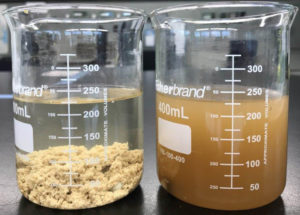
Think about this for a minute: Water is a finite resource that we cannot live without. Put another way, there’s only so much water on the planet, but no life can exist without it. Here in the southeastern U.S., we’re fortunate to be near many water sources, from rivers to streams to lakes (man-made, of course), so it’s hard for us to comprehend a lack of water.
But what’s in that water? The United Nations World Water Development Report says that more than 80% of wastewater is released to surface waters without proper treatment. And while we in the United States might be tempted to think of this as a problem in other counties, we’d be wrong. It happens here, too. As the Chair of the American Academy of Microbiology’s Board of Governors warned, “Microbiologically safe drinking water can no longer be assumed, even in the United States and other developed countries.”
If you’re thinking this relates to hazardous materials in wastewater that’s released to the environment, think again. Simply because a material is deemed non-hazardous doesn’t mean it’s harmless. Government agencies designate what is and what is not a hazardous material. EPA, for example, lists more than 350 hazardous materials in 40 CFR 355, “Emergency Planning and Notification.”
But what about materials that aren’t on those hazardous lists? They can still be harmful to the environment. In fact, federal, state, and local governments have strict stipulations for treatment processes for non-hazardous materials before they’re released into surface waters. These materials include certain chemicals, oils, salts, paints, soaps, and metals. So even if your wastewater is considered non-hazardous, it may still contain any number of government-regulated materials that are harmful to the environment.
The EPA’s Resource Conservation and Recovery Act (RCRA) program regulates non-hazardous wastes under Subtitle D, which also specifically addresses how waste management professionals must develop environmentally sound methods for treating and disposing of non-hazardous waste. States have regulations, too, and those must either meet or exceed federal regulations. Of course, when it comes to ultimate responsibility for waste, regulatory agencies go to the source: you. And because the buck stops with you, you’ll want to make certain that the waste management partner you choose is completely reliable.
Environmental Remedies wants to be part of the solution to protecting our finite but essential-for-life water resources. For more than two decades, we’ve treated non-hazardous waste via a complete range of advanced chemical and biological treatment options. Our processes ensure regulatory compliance; we even track each waste stream to ensure compliance with our permits and governmental discharge regulations. Visit our website at envremedies.com or call us at 404-627-5931 to learn more about how we can work together to protect our water resources with proven, reliable, and compliant waste management processes. With Environmental Remedies as your partner, all solutions lead to clean.
